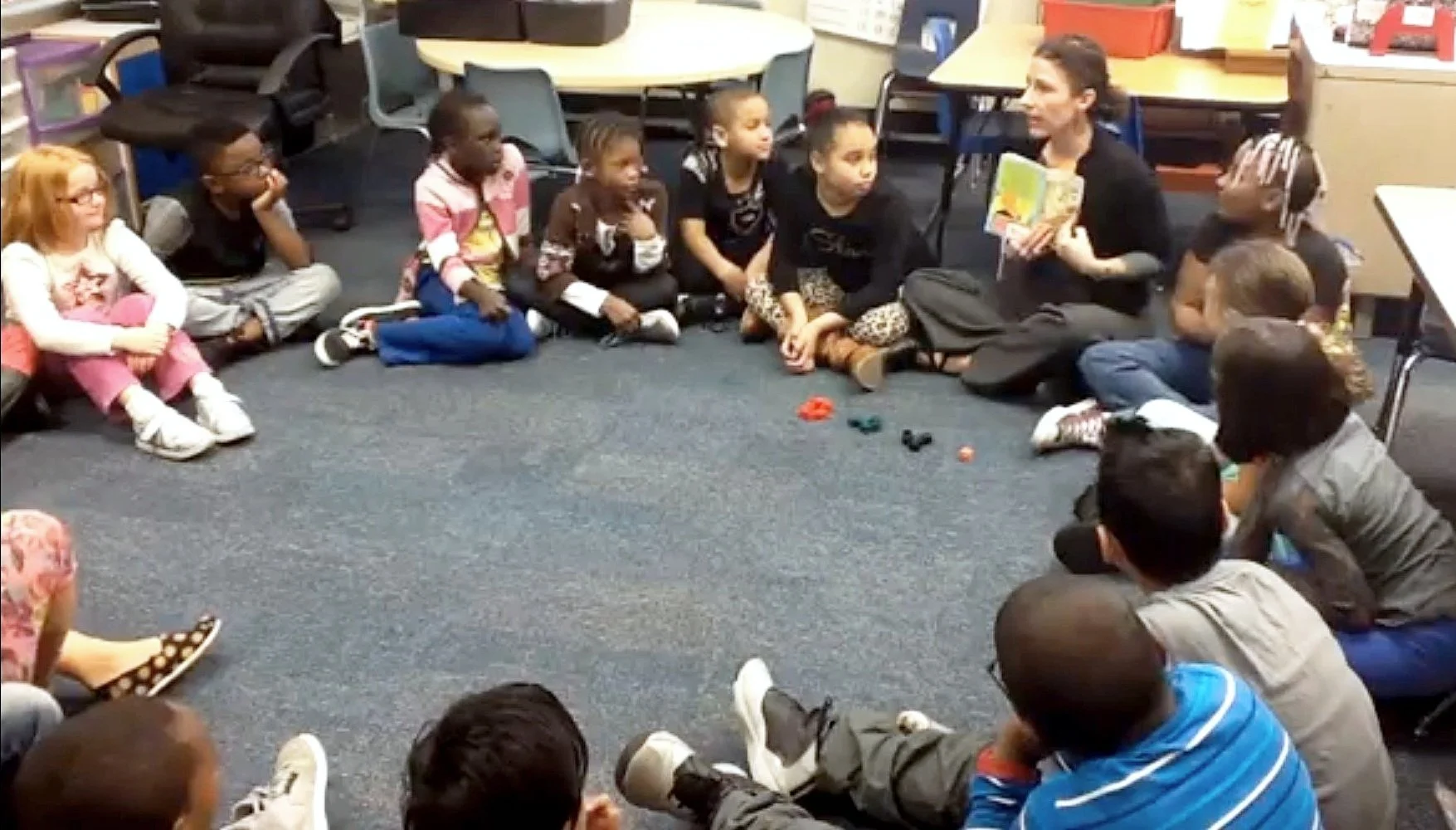Read Aloud
Emergent Read Aloud
During a 5-10 minute emergent read aloud, teachers read aloud emergent storybooks (usually with children in prekindergarten, kindergarten and first grade), where each story is read several days in a row to support:
a love of reading and playful engagement with books through acting out story events
showing feelings and emotions through becoming characters, mimicking their expressions and movements
making predictions about what will/may come next
maintaining the “flow” of events while holding on to story language for retelling, using illustrations
Interactive Read Aloud
During a 15-20 minute interactive read aloud, teachers read to students, immersing them in behaviors that support them with making meaning of complex texts. While teachers read to students, they construct meaning through conversations about texts together. Interactive read aloud expands access to texts of varying genres, language patterns, vocabulary, and topics at levels beyond what most students can read independently. Teachers read texts ahead of time, paying close attention to how they make meaning as readers and take this into consideration as they plan. They also observe, assess, and reflect upon student strengths and needs before, during, and after read aloud experiences to inform their instruction.
Over time, Vicki Vinton and other experts like Timothy Shanahan have reshaped my vision of interactive read aloud from focusing on standards and skills/strategies to being an opportunity for teachers and students to live a process of collaborative meaning-making of texts. This can happen when readers discuss what they know, what they wonder and what they think as “maybe” statements based on wonderings (Vicki Vinton - “Are We Opening the Door Wide Enough for Our Readers”).


